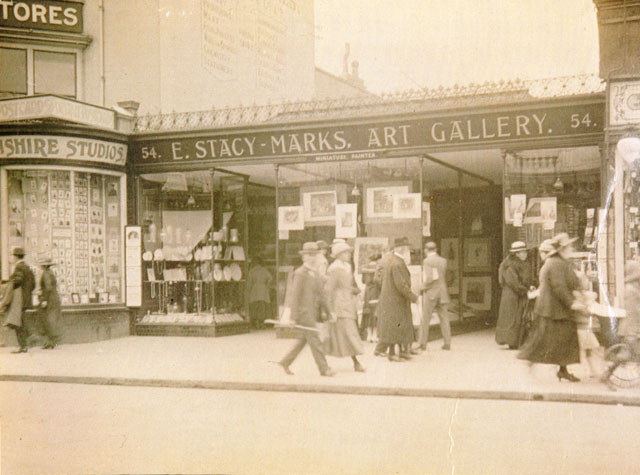

1889-
Sir William Russell-Flint R.A., P.P.R.W.S. (1880 – 1960)
Born in Edinburgh on the 4th April 1880 - the son of Francis Wighton Flint, a watercolour artist and designer, Russell Flint certainly had the background for an artistic career.
After Daniel Stewart's College, he entered the Royal Institution School of Art in Edinburgh where he learned the ground rules of line and colour which he was to develop into his own distinctive style. However, it was a six year apprenticeship as a draughtsman at a large printing works in Edinburgh which gave him the necessary discipline required of all great artists.
In 1900, Russell Flint moved to London to test his talents first as a medical illustrator, recording injuries sustained in the Boer War and later as a Magazine illustrator. Also in that year he took a continental holiday with his brother, an event which must have inspired the man who was to spend much of his life painting the play of light amongst the streets and buildings of France, Spain and Italy.
In 1903 Russell Flint was taken onto the staff of the Illustrated London News as an artist illustrator. In that era before the photograph had entirely ousted drawing and engraving from the pages of newspapers and magazines, the artist was disciplined by the confines of time and editorial in a manner which has since vanished. The fact that the Illustrated London News was a journal distributed throughout the British Empire, took the young Flint's name around the world and laid the foundation for the international status he later enjoyed as a watercolour artist.
Russell Flint stayed with the Illustrated London News until 1907, having married Sibylle Sueter - sister of Admiral Muray Sueter, CB - in 1905, and took up freelance work.
Philip Lee Warner, a publisher, formed the Medici Society and commissioned drawings for `The Song of Solomon' which was published in 1909, from then Russell Flint illustrated a number of classical limited editions until the outbreak of World War One.
The war took Flint into uniform as a Lieutenant attached to the Royal Navy Air Service. By 1918 he was based on the Clyde as Admiralty Assistant Overseer-Airships where he was able to commute to Glasgow and renew acquaintances at the School of Art.
After leaving the Service Flint travelled in France and Spain, drawing and painting the landscapes and small towns, and by 1924 he was elected Associate of the Royal Academy and became a full member nine years later.
In 1936 he became President of the Royal Society of Painters in Watercolour and during the war, was allowed access to Devonport Dockyard where he painted as and when he liked due to his earlier connections with Navel `top brass'. By the end of the war he was back in London and a short period of portraiture led into his ‘mature period'.
He was knighted in 1947 and painted until his death at the age of 89. His career was long and distinguished and through limited editions his work has reached an even wider public.